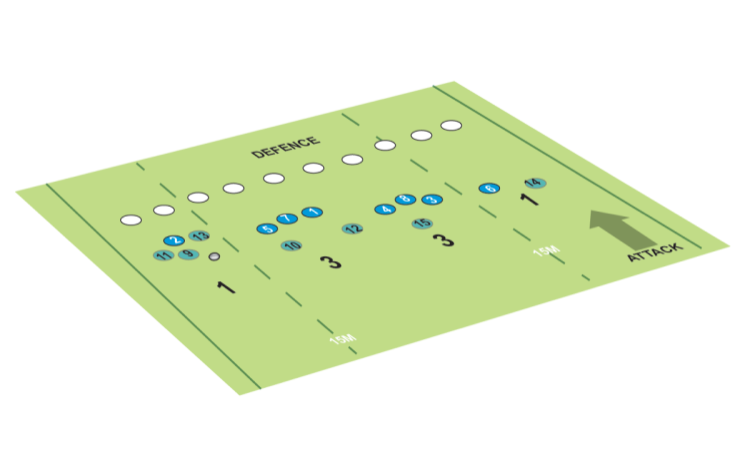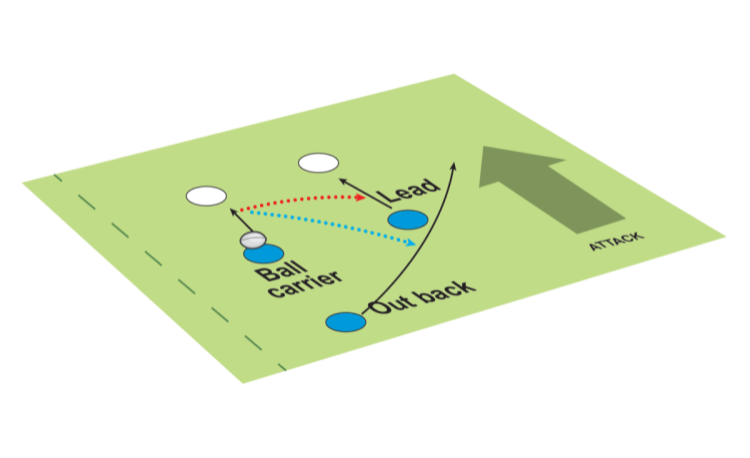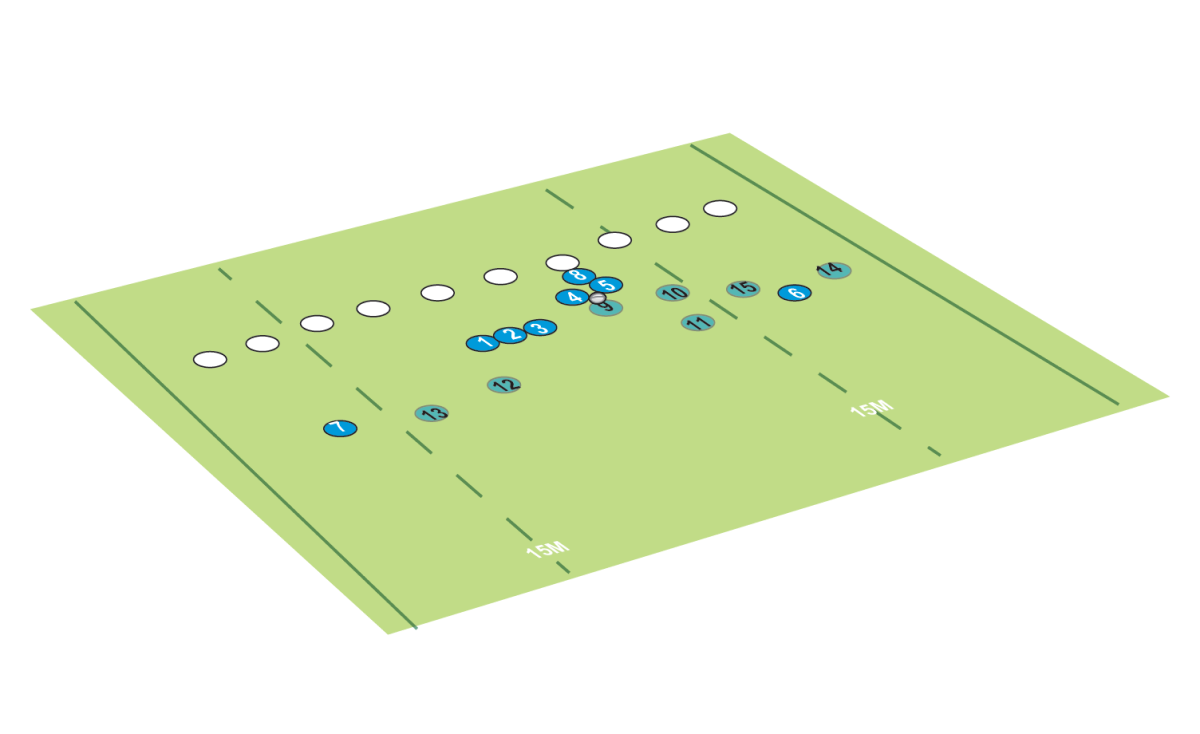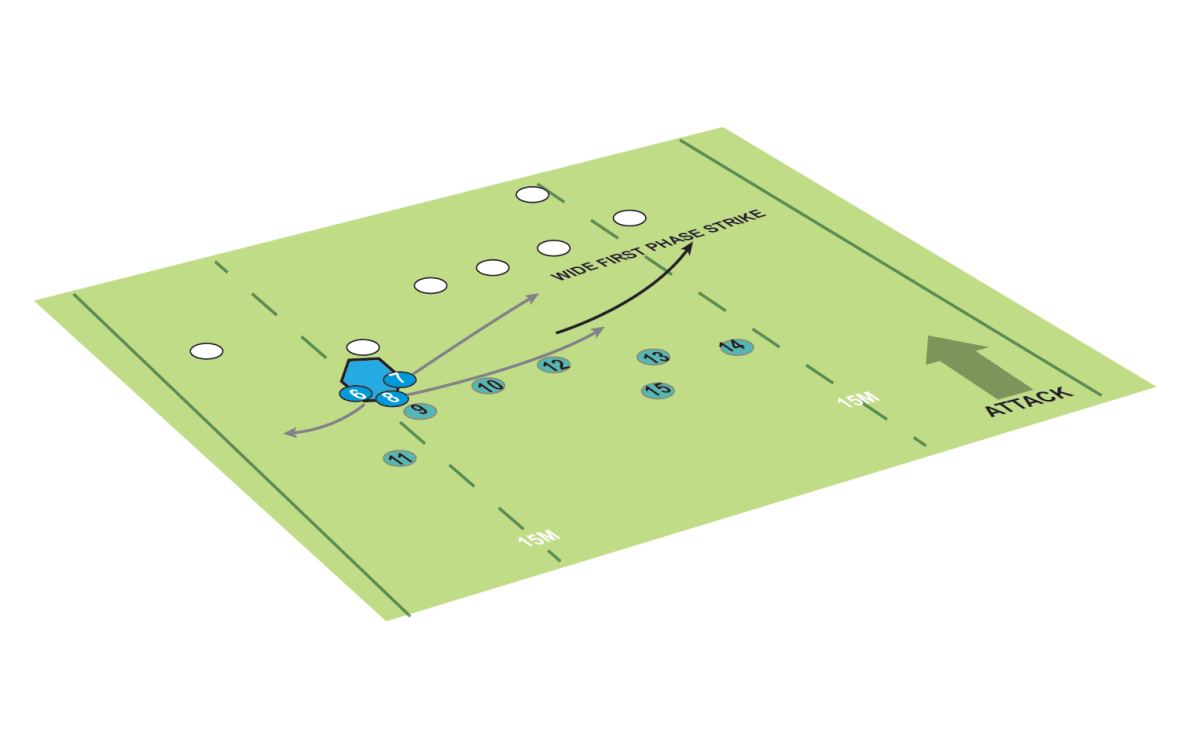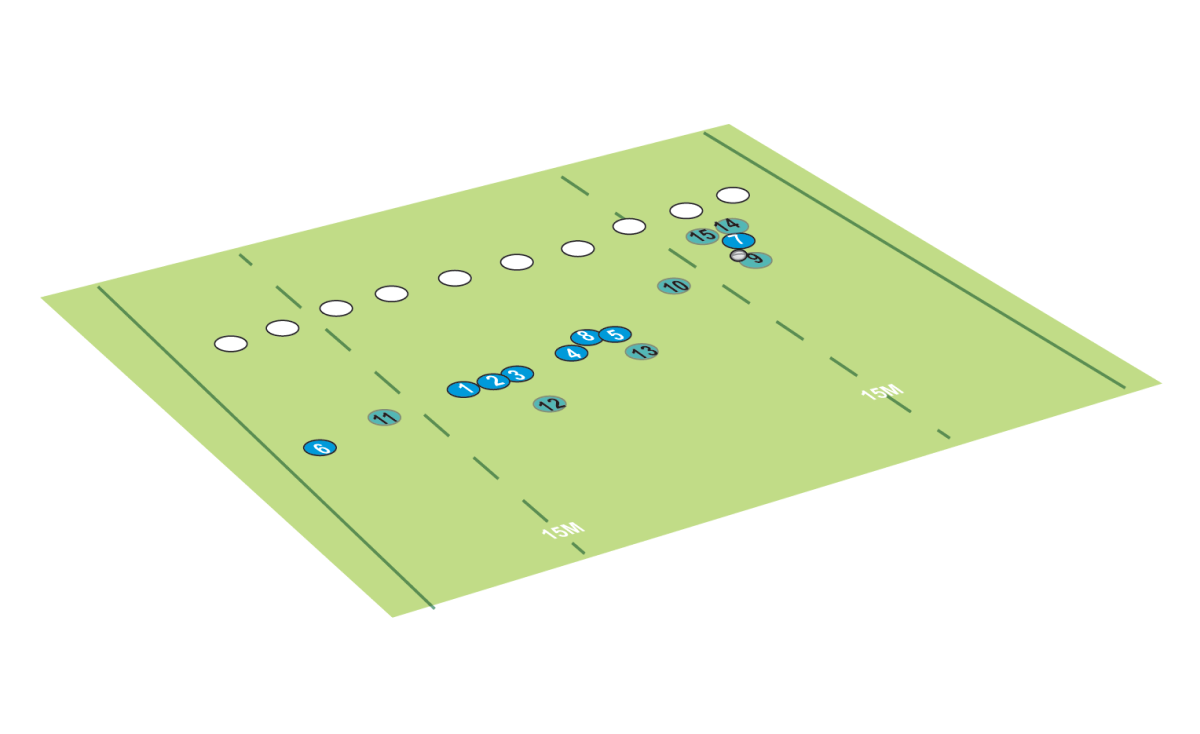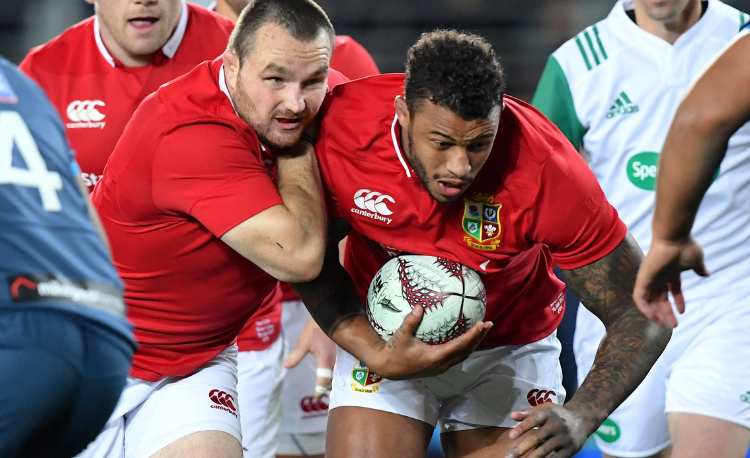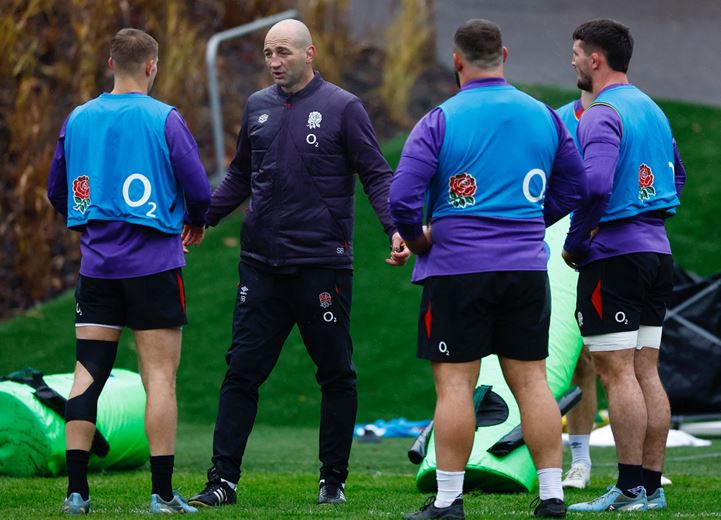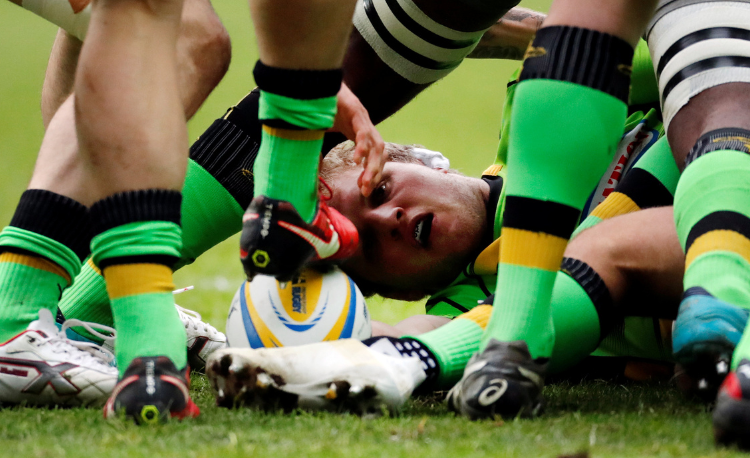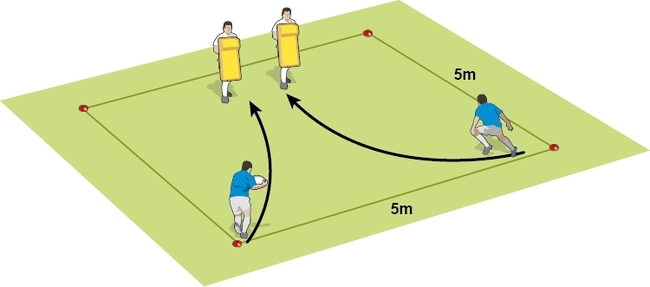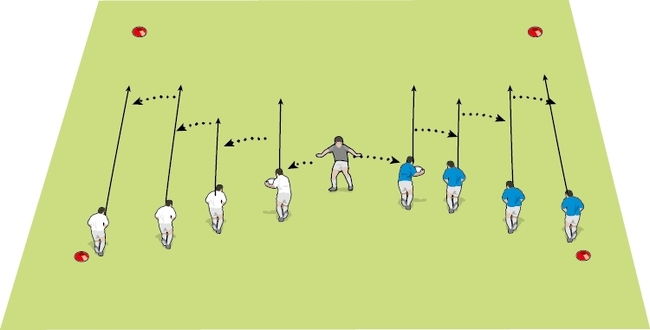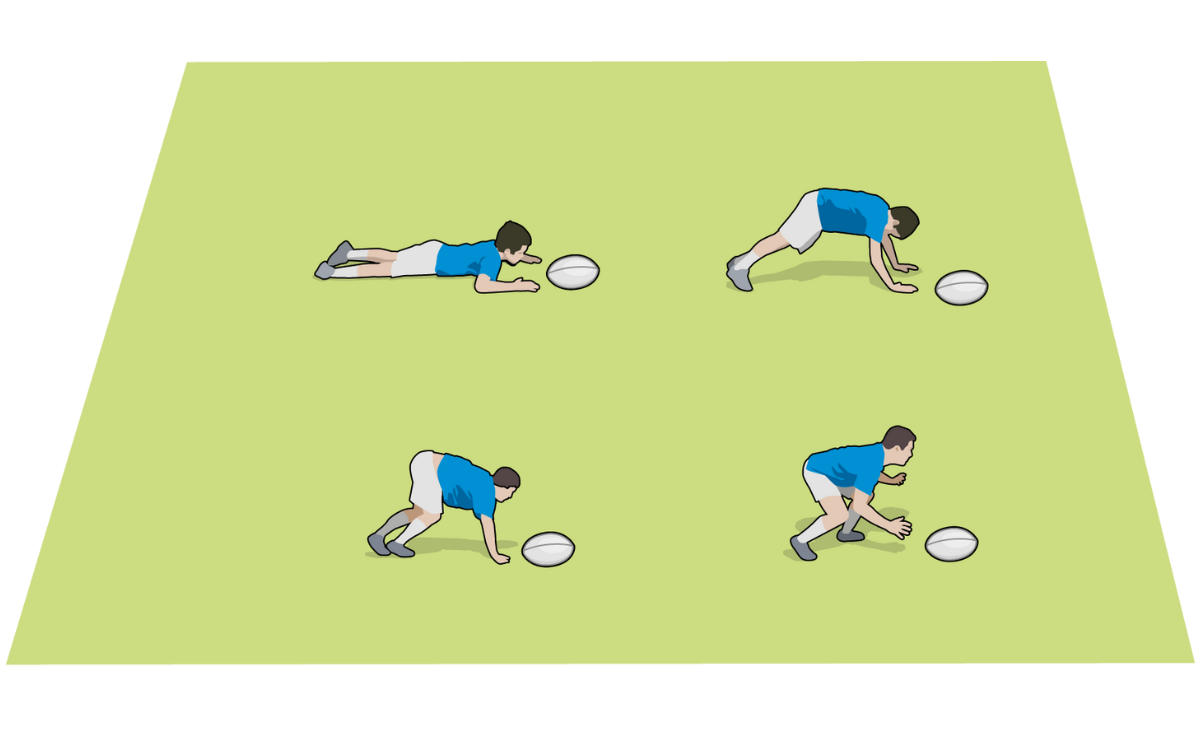Attacking framework - part 3: scrum
RICHARD WHIFFIN on establishing a sound structure to utilise at the set piece.
Employing an attacking framework that your team can utilise in phase play gives a structural strength to the attack from which to create and execute good decisions.
Once a team is comfortable with the framework from unstructured phase play situations, it is important to test the ability to find the framework from set-piece situations.
The difficulty from set piece is that forwards are grouped in one area of the field, creating the need to map out roles for players to find the framework.
Using the 1-3-3-1 attacking framework, we will highlight the roles from scrums that the forwards need to undertake to find themselves in the correct positions to employ the framework.
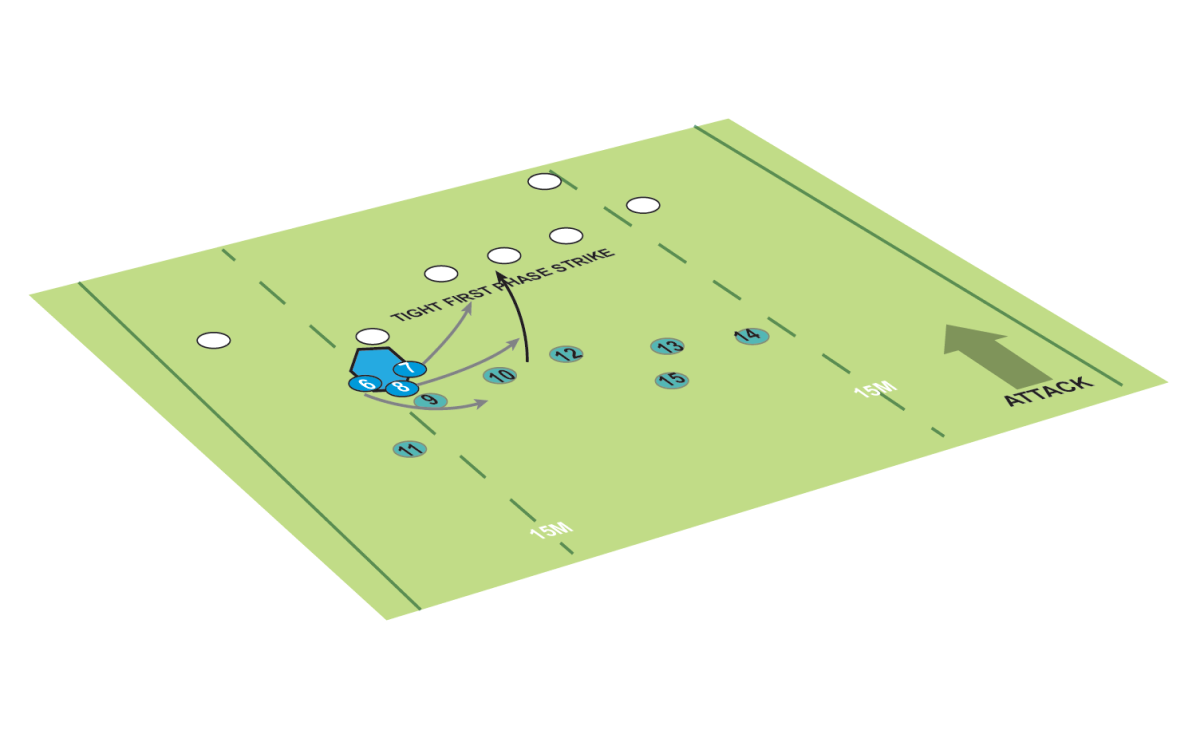
The 8 will be the next forward to get out of the scrum and, generally being one of the better carriers in a team, works to the open side to be a carry option on the next phase.
While the 8 is getting set for the second phase, the blindside flanker (6) can run towards the far edge.
With the back row splitting roles, your attacking framework will have a back-row forward in each attacking zone across a pitch (wide- middle- wide).
The second rows (4 and 5) will be able to break from the scrum once the back row has detached their binds.
They can work around the corner and join with the 8 to create a three-player carry pod.
This leaves the front row (1, 2 and 3), who will be last to exit the scrum and work towards the middle of the pitch as a three-player carry pod.
Related Files
Once the ball is cleared from the second breakdown, the openside flanker (7) can work back towards the blindside edge to create a perfect split of forwards across the pitch
All this happens simultaneously and in constant motion, with the backs working with the edge and middle forwards to employ the 1-3-3-1 framework
A wide strike from an edge scrum is simpler for a team to drop into their framework.
The openside flanker (7) will need to run towards the first breakdown in the wide channel.
With the breakdown being a long distance from the original scrum, the 7 shouldn’t be expected to be the primary cleaner. The nearest back should service the ruck and ensure ball retention is maintained
The 8 works towards the middle of the pitch with the two locks to create a three-player carry pod.
The blindside flanker (6) should work towards the opposite touchline to the ball.
This maintains width in the attacking framework as the blindside winger could be involved in the strike play on the far side. The front row (1, 2 and 3), last to break up from the scrum, work together to the middle of the field to create another three-player carry pod.
The examples above highlight that, with a simple level of understanding of the players’ roles, a team can drop into their attacking framework quickly after a couple of phases.
Roles can be adapted to utilise different strike plays or multi-phase maps but, generally, the back row will be able to create the forward split needed for the framework.
Newsletter Sign Up
Coaches Testimonials

Gerald Kearney, Downtown Las Vegas Soccer Club

Paul Butler, Florida, USA

Rick Shields, Springboro, USA

Tony Green, Pierrefonds Titans, Quebec, Canada
Subscribe Today
Be a more effective, more successful rugby coach
In a recent survey 89% of subscribers said Rugby Coach Weekly makes them more confident, 91% said Rugby Coach Weekly makes them a more effective coach and 93% said Rugby Coach Weekly makes them more inspired.
Get Weekly Inspiration
All the latest techniques and approaches
Rugby Coach Weekly offers proven and easy to use rugby drills, coaching sessions, practice plans, small-sided games, warm-ups, training tips and advice.
We've been at the cutting edge of rugby coaching since we launched in 2005, creating resources for the grassroots youth coach, following best practice from around the world and insights from the professional game.
